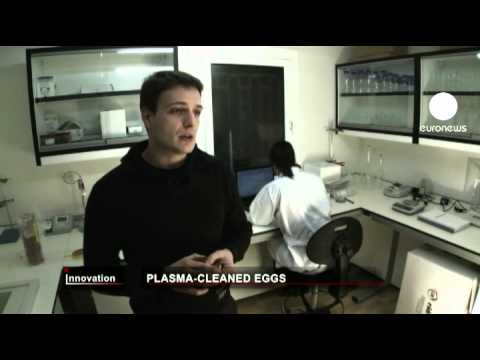Our growing consumption of eggs and egg-products raises the question of how to kill the dangerous bacteria found on the shells.
A new machine developed as part of the EU-backed Eggsterilisation project solves the question in a most spectacular manner.
“We’re working on ways to sterilise eggs using plasma at atmospheric pressure level,” said Project Manager Yago Yáñez.
“We put the eggs in a closed reactor, which we fill with inert gases at atmospheric pressure. Then we use high voltage – around 30 kilovolts – to create plasma around the eggs.”
Without cooking the eggs, this rapid treatment kills virtually all the bacteria on the shells.
“The plasma works in several ways: most importantly, it creates UV emission, a widely used sterilisation procedure. It also produces ionised particles that kill bacteria too,” added Yago Yáñez.
It is hoped this European-funded project will help solve the problem of food bacteria.
Every year, salmonella alone affects thousands of people across Europe.
There are other sterilisation methods, such as chloride baths or radiation exposure but it seems plasma is the safest.
“In Europe, chemical baths are not allowed because of the risk of contamination of the egg itself, and gamma rays are not very popular among consumers. So the egg producing industry keeps demanding new solutions to sterilize egg shells,” said Jacobo Álvarez of the CRIC, a Barcelona-based private research and engineering centre.
This new prototype developed by European researchers kills 99.5 percent of the bacteria found on egg shells.
Further improvements are expected before this new technology is implemented in the egg industry.
“The two main benefits of our sterilization system are, firstly, safer eggs, less likely to spread disease, and secondly a longer shelf-life – so they can be stored longer,” says Yago Yáñez.





